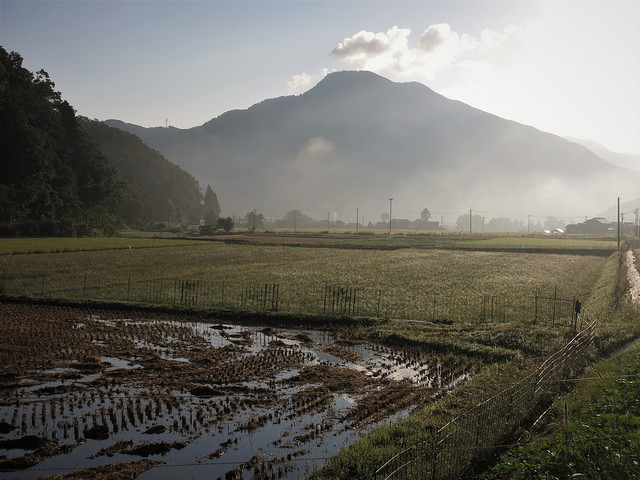Jun 27, 2018
Getting Away in Japan: Fukui
Despite being located within Japan’s ‘Snow Country’ and facing out into the Sea of Japan, Fukui Prefecture doesn’t quite attract the hordes of tourists that other more famous parts of Japan gets. However, that means that when you visit there are less people to with whom you must share the dramatic scenery, crystal clear waters, ancient history and exciting parks that this delightful part of Japan offers.
Here are a few of the top spots that you should check out in Fukui Prefecture.
Crystal Beach and Mizushima Resort
Crystal Beach, also known as Suishohama, is perhaps Fukui Prefecture’s most beautiful, accessible beach, and that is certainly saying something in this area of natural coastline beauty. With crystal clear waters and powdery white sand it is the image of idylic, and its calm, gently undulating waves makes it ideal for bathing. While rarely overcrowded, it has the full amenities that you require of a beach resort, and it is perfect for beach lovers of all ages.
If you want to head to a beach that is a little more secluded, hop on a ferry to Mizushima Resort, an uninhabited island on the tip of the Tsuruga Peninsula. Perhaps Fukui’s best kept secret, ferries to the island take about 10 minutes from Irogahama Pier, and it is very much worth the trip.
Tojinbo
Further along the coast, northwards from the beautiful beaches, the scenery becomes a whole lot more dramatic. Tojinbo is a one kilometer stretch of jagged, rugged coastline carved down the centuries by the punishing relentlessnes of the Japan Sea, forming towering hexagonal statuesque rock piles, a unique geological formation that can be seen in only three spots around the world and nowhere else in Japan.
Walk along this area of outstanding natural beauty through trails 30 meters above waves that hammer through chasms, and clamber down to the very water’s edge. Though be warned, the area was named for a monk who tumbled into the ferocious seas to his untimely demise.
At the end of the trail, past the obligatory restaurants, is a path to a small fishing village and then on to Oshima Island, but for those wanting a more relaxing experience – or wish to keep a more respectful distance from the bluffs – there is a boat tour that takes 30 minutes, but does not run at times of high or rough tides.
Eiheiji
One of the two main Soto Zen Buddhist temples in Japan, Eiheiji was founded in 1244 by the great monk Dogen, the key bringer of Soto Zen Buddhism to Japan. Today a training monastery with more than two hundred monks and nuns in residence, as of 2003 Eihei-ji saw 800,000 visitors and pilgrims visit each year, though there has been some decline in the years since.
The large temple complex is made up of more than 70 buildings and structures, most of which are connected by covered walkways, enabling monks, nuns and visitors to manouver around its many areas, protected from the heavy snow seen in the region from December to March.
While access is allowed to many of the beautiful old structures, unfortunately much of the temple does not permit the general public. However, those with Zen Buddhist experience may, with prior arrangements made, remain on the grounds as participants and be treated as religious trainees.
Fukui Prefectural Dinosaur Museum
Religion isn’t the only way in which Fukui has historical relevance. The area is one of the most fertile areas for dinosaur research, with the country’s most prolific excavation site found in Katsuyama City.
Fukui Prefectural Dinosaur Museum is dedicated to dinosaur research and education and is considered one of the top dinosaur museums in the world.
With the museum covering four floors, visitors can find more than 40 dinosaur skeletons on display including examples of the local Fukui-raptor and Fukui-saurus, both of which were found nearby and all have superb explanations in both English and Japanese. Other highlights include several life size animatronic dinosaurs, such as an incredibly life-like Tyrannosaurus Rex that greets visitors as they enter.
Shibamasa World
If the Dinosaur Museum is interesting for both kids and adults, Shibamasa World is aimed squarely at the younger generations.
This huge amusement park has got everything to entertain your family of all ages, with a Viking ship, rollercoasters, go-karts, laser rifle clay pigeon shooting, a motorboat cruise, archery, a toddler’s fun house and much, much more.
Perhaps the biggest attractiuon is the pool and water slides, one of which – The Monster Slider – is claimed to be the biggest of its kind in the world, and new this year sees the coming of The Monster Wing, which looks absolutely terrifying.
Camping at Shibamasa World is available, however you will need to book in advance.
For further information on Fukui Prefecture, check out the Tourist Board’s website here.
Getting Away in Japan
This article is part of a Japan Info Swap series about traveling around Japan. Check out the others in the series here.
By Mark Guthrie
Photo by G Witteveen (CC BY-SA 2.0) via flickr.com -Modified
Photo by http://www.suishohama.com
Photo by M Reza Faisal (CC BY-SA 2.0) via flickr.com -Modified
Photo by Tak H. (CC BY-SA 2.0) via flickr.com -Modified
Photo by Hideya HAMANO (CC BY-SA 2.0) via flickr.com -Modified
Photo via http://shibamasa.com/pool/pool.html#monster-Modified








About the author